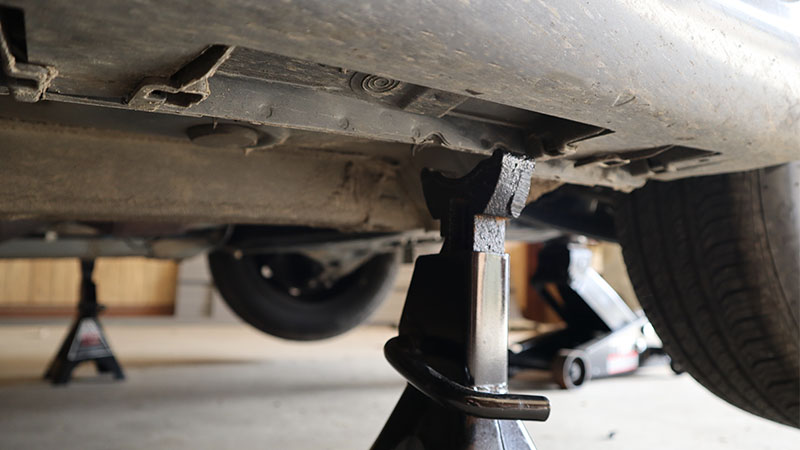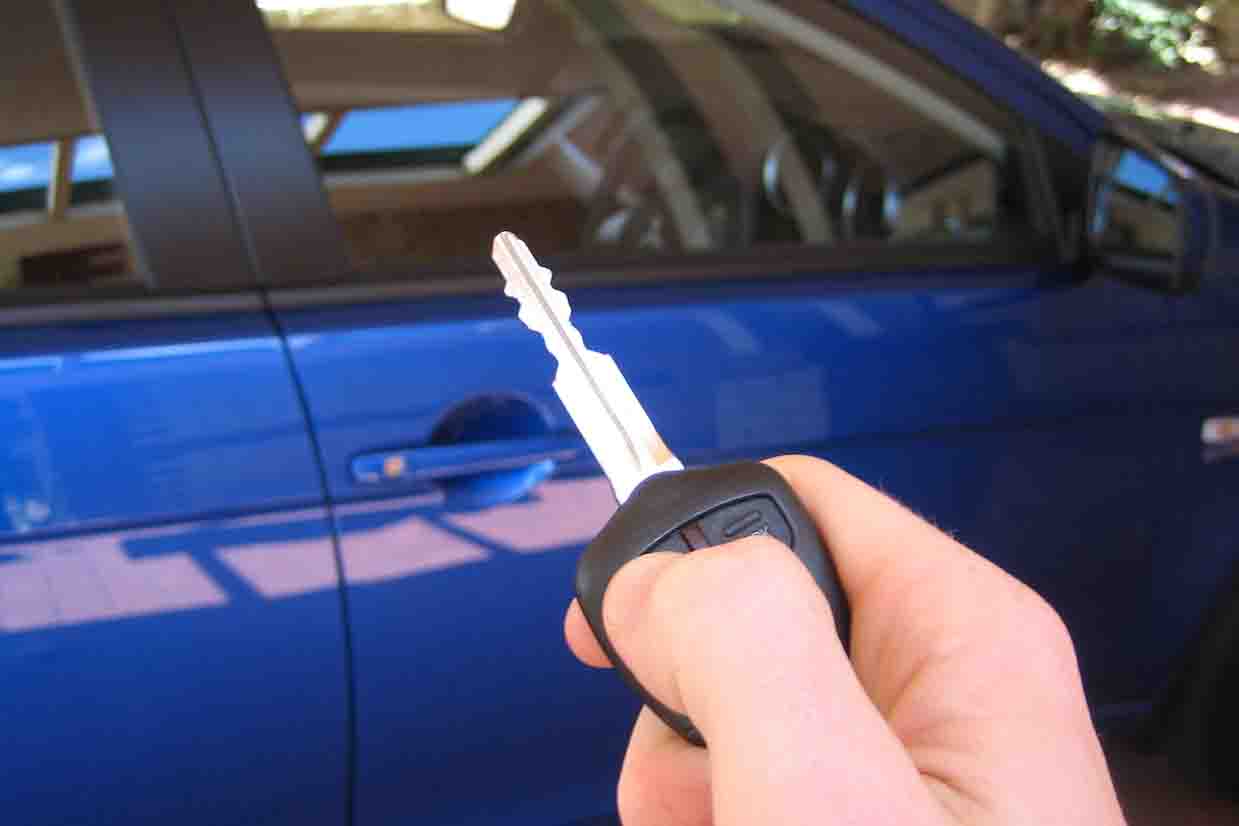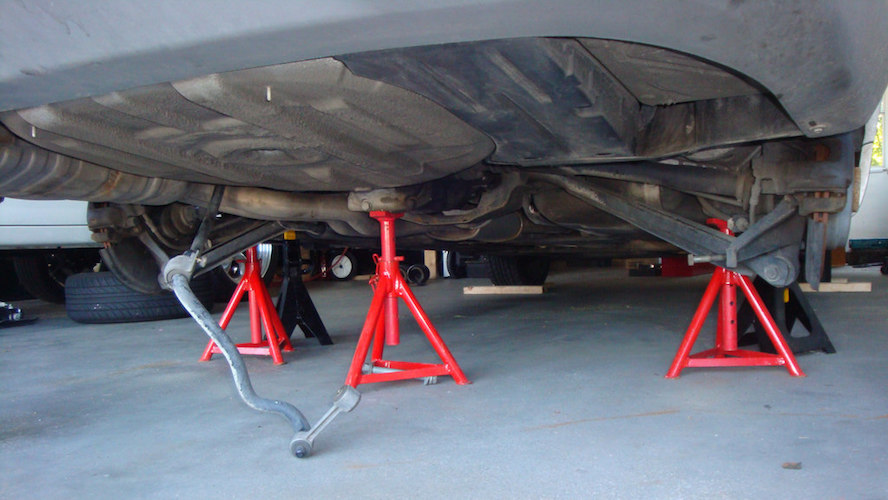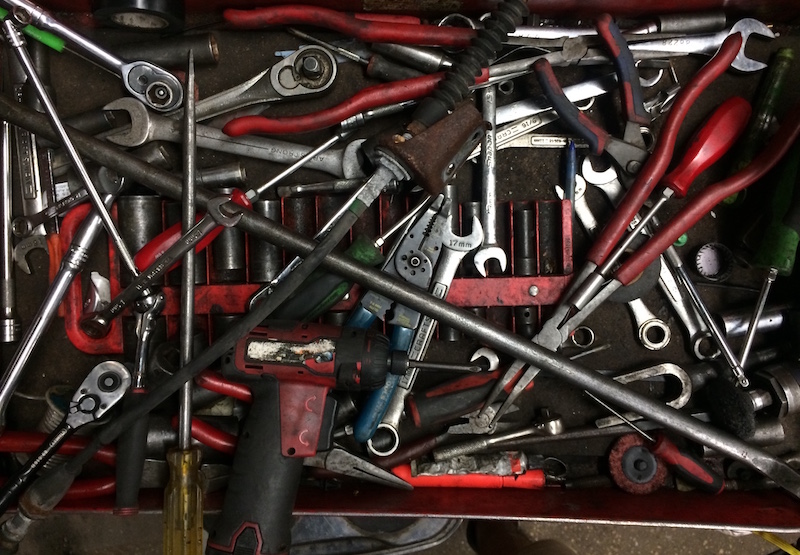If you ever need to get under your vehicle for some inspection or repair, you'll need to know how to raise your vehicle safely to avoid a possible disaster. The good news is that the rickety bumper jacks of the '70s and '80s are a thing of the past, replaced by scissor jacks or bottle-style hydraulic jacks. Still, these jacks are not sufficient or safe for working under a vehicle without a more stable form of support. We're going to go over ways to support a vehicle safely and give you enough clearance to get underneath it.
Dos and Don'ts for Jacking up A Vehicle
DO
- Use drive-on ramps. If you're working on the vehicle's front end and don't need to remove the wheels, drive-on ramps are a great option. The only problem with ramps is that they can scoot forward as you drive onto them, and you'll need an assistant to ensure that you're driving straight onto the ramps. Check out these ramps that are designed to stay in place as you drive onto them.
- Use a floor jack. A floor jack is another safe option. When jacking the front of the vehicle, set the jack under the frame crossmember. If you're raising one side, look for the lift points indicated on the pinch weld, or lift from the frame.
- Set the parking brake securely whenever you raise the front end of a vehicle.
- Chock the wheels at the opposite end of the vehicle to prevent slippage. Wheel chocks are designed specifically for this purpose, but even a chunk of 2 x 4 can work.
Use jack stands. Jack stands are the most secure and safe way to raise a vehicle. Always be sure to place jack stands under the control arms, frame crossmember or frame members. If you need to lift all four wheels off the ground for exhaust or transmission work, the rear axle is often the preferred placement for jack stands. Still, you should consult the vehicle's service manual for factory recommendations.
DON'T
- Rely on the bottle jack or floor jack as the only support for a vehicle, but do leave a jack positioned under the frame or other secure lifting spot, even if you're using jack stands.
- Raise a vehicle with a jack or jack stand under the transmission pan or oil pan. The pan's sheet metal is fairly thin and can easily be distorted or even punctured by supporting the weight of a vehicle.
- Rely on cinderblocks or plastic milk crates. They're not meant to support that much weight and can fail without warning.
Know How To Use the Jack
When you're raising the vehicle to set it on jack stands, it's best to use the floor jack to quickly get both wheels to the desired height. If you don't have a floor jack, use the bottle jack or scissor jack to raise one side at a time, then carefully set the jack stand underneath at a secure point for support. Repeat these steps on the other side and make sure the wheels at the opposite end are chocked as you raise the vehicle.
Don't skip any of these safety steps for raising a vehicle — you don't ever want a vehicle to drop with you under it!
Suggested further reading:











